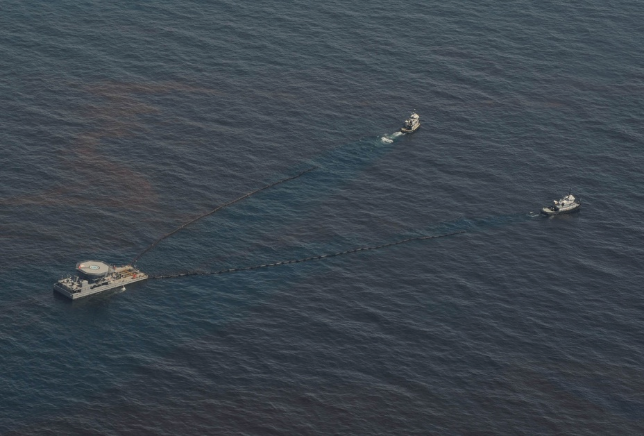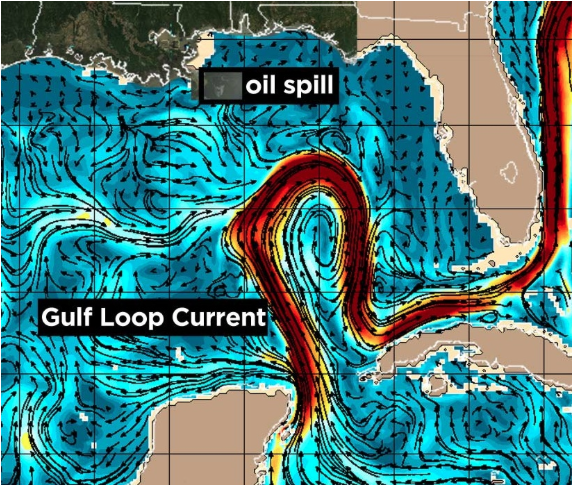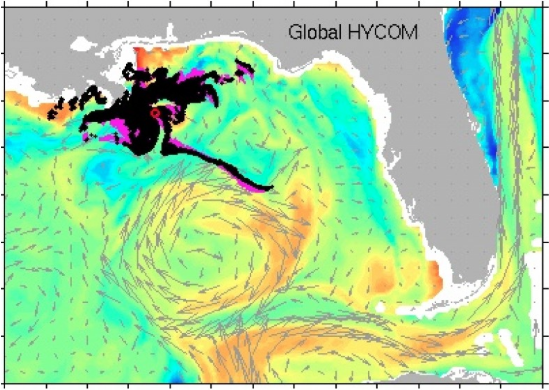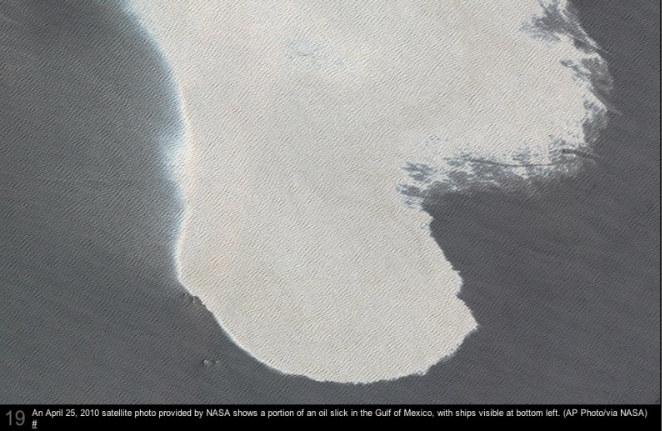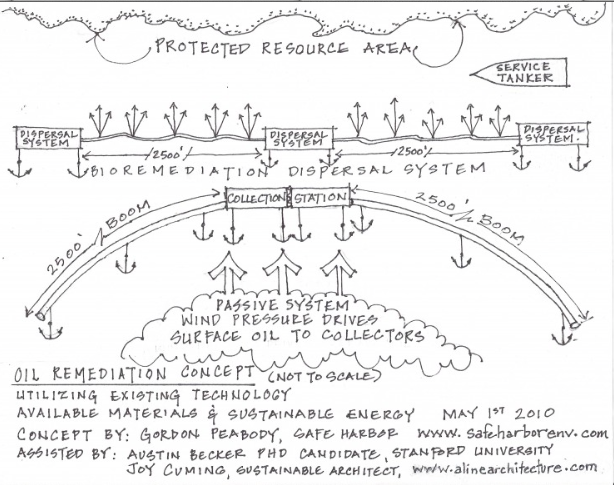May 1, 2010: Following these sketches you will find our rationale and after that you will find relevant links and continuing updates from the Gulf.
Safe Harbor has developed these innovative, alternative response concepts, following a phone discussion with an engineer from the Gulf of Mexico, who was seeking new ideas for dealing with the overwhelming oil spill. These concepts were developed over a long weekend by an adhoc group, put together by Safe Harbor. Our concept addressed the request for "Alternate Response Technology" but what we really did was to look at all available, existing materials and technologies and just reconfigure them. These concepts reduce worker exposure to carcinogenic raw oil, reduce effort significantly and provide more effective collection. These conceptual sketches were executed by LEED Certified, Sustainable Architect Joy Cuming of Aline Architecture in Orleans, MA.
For some perspective, about 300 miles of coastline may be directly impacted. The Gulf coastline north of the spill area, stretches more than 800 miles. If the prevailing, seasonal southerly winds continue, much of this coast may be at risk. If southwest winds blow, Florida's 300 mile Gulf Coast will additionally be at risk and IF the wind should blow from the north..the Gulf Coast of Florida may be spared but the Gulf Stream, which loops near the spill, will be impacted and transport oil first to the reefs of the Florida Keys, and then to Miami beaches, followed by the Outer Banks and on into the North Atlantic Ocean and the east coast. Mexico, Cuba and the Bahamas may eventually find this oil in their coastal ecosystems and on beaches. Most likely, with 3 different leaks now reported and a long term scenario looming, all of these things may happen. Downplaying these possibilities sort of ignores the truth of possibly a quarter million gallons, or more, being added to the equation each day.
Rationale: In the current scenario, recovery and mitigation require long term, sustainable concepts for collection. Using sustainable and passive principles, we reviewed existing technology, in place materials and available vessels. Our concept considers a reconfiguration of existing elements, which could contribute to increased remediation and reduced effort. This concept would also minimize exposure of emergency workers to carcinogens in recovered oil.
With this concept, floating oil would be delivered, by natural forces, to the collection areas, instead of collection systems chasing oil. Collection booms would be used to direct the floating oil instead of trying to encircle it. This would reduce effort and materials. Conceptual configuration can be left in place for prevailing winds and reconfigured in response to changing winds.

